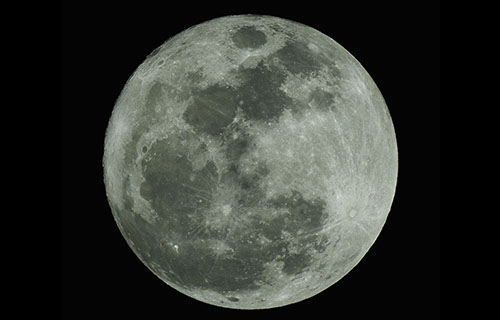Though data from orbitery have suggested presence of voda ice, the exploration of lunární craters in the polar regions of moon has not been possible due to the absence of suitable technology to power lunární rovers in the perpetually dark, super cold areas having a temperature of –240°C. The project PHILIP (‘Powering rovers by High Intensity Laser Induction on Planety’) commissioned by European space Agency is ready to develop prototypes that would provide laser power to these rovers in an effort to explore evidence of existence of voda in these craters.
Měsíc neotáčí se kolem své osy, když se točí kolem Země, takže druhá strana Měsíce není ze Země nikdy viditelná, ale obě strany dostávají dva týdny slunečního světla následované dvěma týdny noci.
However, there are sunken areas in craters situated in the polar regions of moon that never receive sun-light because low angle of sunlight that leave the deep interiors of the craters in shadow forever. This perpetual darkness in the polar craters make them super cold in the range of –240°C corresponding roughly to about 30 Kelvin i.e. 30 degrees above absolute zero. The data received from the lunární orbitery of ESA, ISRO a NASA have shown that these permanently shadowed areas are rich in hydrogen, suggestive of presence of voda (ice) in these craters. This information is of interest for science as well as a local source of ‘voda and oxygen’ for future moon human habitation. Therefore, there is a need of a rover that could go down to such craters, drill and bring sample for testing to confirm presence of ice there. Given lunární rovers are usually solar powered, this has not been achieved so far because it has not been possible to ensure power supply to rovers while it explores some of these dark craters.
Jednou z úvah bylo mít vozítka s jaderným pohonem, ale bylo zjištěno, že to není vhodné pro průzkum ledu.
Projekt vychází ze zpráv o použití laseru k pohonu dronů, aby je udržely ve vzduchu po delší dobu. FILIP (‘Powering rovers by High Intensity Laser Induction on Planety’) was commissioned by European space Agency to design a complete s laserovým pohonem průzkumná mise.
The PHILIP project is completed now and the ESA is one step closer to powering lunární rovers with lasers to explore the super cold dark měsíční krátery poblíž pólů.
ESA would now begin to develop prototypes for exploring the dark craters that would provide evidence for confirmation of the presence of voda (ice) leading to realisation of human dream to inhabit this satellite.
***
Zdroje:
Evropská kosmická agentura 2020. Povolení a podpora / Vesmírné inženýrství a technologie. Laserem poháněný rover k prozkoumání temných stínů Měsíce. Publikováno 14. května 2020. Dostupné online na http://www.esa.int/Enabling_Support/Space_Engineering_Technology/Laser-powered_rover_to_explore_Moon_s_dark_shadows Zpřístupněno dne 15. května 2020.
***






































